#famous art museums with online exhibits
Text
Selfless Art Gallery

Website: https://www.selflessart.com/
Address: New York, USA
Selfless Art Gallery, founded in New York City in 2022, endeavors to foster Self-awareness through meticulously curated collections of abstract, contemporary, and representational art. Representing some of the world's most potent and influential abstract and contemporary artists, the gallery aspires to remind individuals that everything they seek resides within. Through curated online exhibitions, Selfless Art challenges perceptions of identity and self, while artworks sold serve as aspirational reminders to remain present and resist negative thoughts, thereby contributing to mental well-being.
Facebook: https://www.facebook.com/selflessartgallery
Instagram: https://www.instagram.com/selflessartgallery/
Pinterest: https://www.pinterest.com/selflessartgallery/
Keywords:
contemporary art
museum of contemporary art
contemporary art museum
online art gallery
new museum of contemporary art
online art exhibition
art therapy for mental health
best online art galleries
art for mental health
contemporary art gallery online
famous art museums with online exhibits
online art exhibit
art museums online gallery
online art gallery museum
online art exhibition free
art projects for mental health
online art museum exhibits
best martial arts for mental health
3d art gallery online
art gallery online store
art museum online gallery
art photography gallery online
best online art galleries for artists
best online gallery to sell art
online art gallery new york
best online art exhibitions
contemporary art gallery online exhibitions
online art exhibition 2023
online art exhibition platforms
online art exhibition websites
online contemporary art exhibitions
curated art collections
curated collection art
curated collection wall art
contemporary african art new york
contemporary art center new orleans jobs
contemporary art exhibitions new york
contemporary art fair new york
contemporary art gallery new york
new contemporary art
new contemporary art gallery
new contemporary art movement
new york contemporary art
new york contemporary art fair
new york contemporary art museum
art for mental health awareness
art good for mental health
art projects for mental health patients
art therapy activities for mental health patients
arts and crafts for mental health
unique affordable art
art exhibition online gallery
art museum online exhibitions
three representational artists and three abstract artists
art gallery new york online
curated art collection
curating private art collections
artist submissions gallery new york
artist submissions new york gallery
new york art gallery artist submissions
new york art gallery tacking new artist submissions
new york galleries accepting artist submissions
art therapy for self awareness
self awareness theme for art
art therapy activity for self-acceptance
affordable unique wall art
buy affordable unique art
unique affordable fine art
abstract representational art by an artist
abstract representational artists
representational abstract artists
#contemporary art#museum of contemporary art#contemporary art museum#online art gallery#new museum of contemporary art#online art exhibition#art therapy for mental health#best online art galleries#art for mental health#contemporary art gallery online#famous art museums with online exhibits#online art exhibit#art museums online gallery#online art gallery museum#online art exhibition free#art projects for mental health#online art museum exhibits#best martial arts for mental health#3d art gallery online#art gallery online store#art museum online gallery#art photography gallery online#best online art galleries for artists#best online gallery to sell art#online art gallery new york#best online art exhibitions#contemporary art gallery online exhibitions#online art exhibition 2023#online art exhibition platforms#online art exhibition websites
1 note
·
View note
Text
Often described as the world’s largest Buddhist monument, Borobudur rises from the jungles of central Java: a nine-leveled step pyramid decorated with hundreds of Buddha statues and more than 2,000 carved stone relief panels. Completed in 835 AD by Buddhist monarchs who were repurposing an earlier Hindu structure, Borobudur was erected as “a testament to the greatness of Buddhism and the king who built it,” says religion scholar and Borobudur expert Uday Dokras.
Though Buddhists make up less than one percent of Indonesia’s population today, Borobudur still functions as a holy site of pilgrimage, as well as a popular tourist destination. But for the Indonesian Gastronomy Community (IGC), a nonprofit organization dedicated to preserving and celebrating Indonesian food culture, Borobudur is “not just a temple that people can visit,” says IGC chair Ria Musiawan. The structure’s meticulous relief carvings, which depict scenes of daily life for all levels of ninth-century Javanese society, provide a vital source of information about the people who created it. Borobudur can tell us how the inhabitants of Java’s ancient Mataram kingdom lived, worked, worshiped, and—as the IGC demonstrated in an event series that ended in 2023—ate.
The IGC sees food as a way to unite Indonesians, but the organization also considers international gastrodiplomacy as a part of their mission. Globally, Indonesian food is less well-known than other Southeast Asian cuisines, but the country’s government has recently made efforts to boost its reputation, declaring not one, but five official national dishes in 2018. To promote Indonesian cuisine, the IGC organizes online and in-person events based around both modern and historical Indonesian food. In 2022, they launched an educational series entitled Gastronosia: From Borobudur to the World. The first event in the series was a virtual talk, but subsequent dates included in-person dinners, with a menu inspired by the reliefs of Borobudur and written inscriptions from contemporary Javanese sites.
In collaboration with Indonesia’s Ministry of Foreign Affairs and other partner organizations, the first meal in the Gastronosia series was, fittingly, held at Borobudur, with a small group of guests. The largest event, which hosted 100 guests at the National Museum in Jakarta, aimed to recreate a type of ancient royal feast known as a Mahamangsa in Old Javanese, meaning “the food of kings.” The IGC’s Mahamangsa appeared alongside a multimedia museum exhibition, with video screens depicting the art of ancient Mataram that inspired the menu and displays of historical cooking tools, such as woven baskets for winnowing and steaming rice. Another event, held at Kembang Goela Restaurant, featured more than 50 international ambassadors and diplomats invited by the Ministry of Foreign Affairs.
But how does one translate 1,000-year-old stone carvings into a modern menu that’s not only historically accurate, but appetizing? “We have to have this very wide imagination,” says Musiawan. “You only see the relief [depicting] the food…but you cannot find out how it tastes.” The IGC designed and tested a Gastronosia menu with the help of Chef Sumartoyo of Bale Raos Restaurant in Yogyakarta, and Riris Purbasari, an archaeologist from the Central Java Province Cultural Heritage Preservation Center, who had been researching the food of Borobudur’s reliefs since 2017.
The range of human activities depicted in the reliefs of Borobudur is so wide that it has inspired research in areas of study stretching from music to weaponry. There have even been seaworthy reconstructions based on the “Borobudur Ships” displayed on the site’s lower levels, exquisitely rendered vessels like the ones that facilitated trade in ancient Southeast Asia. So it’s no surprise that Borobudur has no shortage of depictions of food-related scenes, from village agricultural labor, to the splendor of a royal Mahamangsa, to a bustling urban marketplace. Baskets of tropical fruit, nets full of fish, and even some modern Indonesian dishes are recognizable in the reliefs, such as tumpeng, a tall cone of rice surrounded by side dishes, which is still prepared for special occasions. Some images are allegories for Buddhist concepts, providing what Borobudur archaeologist John Mikic called “a visual aid for teaching a gentle philosophy of life." Uday Dokras suggests that these diverse scenes might have been chosen to help ancient visitors “identify with their own life,” making the monument’s unique religious messaging relatable. The reliefs illustrate ascending levels of enlightenment, so that visitors walk the path of life outlined by the Buddha’s teachings: from a turbulent world ruled by earthly desires at the lowest level, to tranquil nirvana at the summit.
Musiawan says that the IGC research team combined information from Borobudur with inscriptions from other Javanese sites of the same era that referenced royal banquets. While Borobudur’s reliefs show activities like farming, hunting, fishing, and dining, fine details of the food on plates or in baskets can be difficult to make out, especially since the painted plaster that originally covered the stone has long-since faded. Ninth-century court records etched into copper sheets or stone for posterity—some accidentally uncovered by modern construction projects—helped fill in the blanks when it came to what exactly people were eating. These inscriptions describe the royal banquets of ancient Mataram as huge events: One that served as a key inspiration for the IGC featured 57 sacks of rice, six water buffalo, and 100 chickens. There are no known written recipes from the era, but some writings provide enough detail for dishes to be approximated, such as freshwater eel “grilled with sweet spices” or ground buffalo meatballs seasoned with “a touch of sweetness,” in the words of the inscriptions, both of which were served at Gastronosia events.
Sugar appears to have been an important component in ancient Mataram’s royal feasts: A survey of food mentions across Old Javanese royal inscriptions revealed 34 kinds of sweets out of 107 named dishes. Gastronosia’s Mahamangsa ended with dwadal, a sticky palm-sugar toffee known as dodol in modern Indonesian, and an array of tropical fruits native to Java such as jackfruit and durian. Other dishes recreated by the IGC included catfish stewed in coconut milk, stir-fried banana-tree core, and kinca, an ancient alcohol made from fermented tamarind, which was offered alongside juice from the lychee-like toddy palm fruit as an alcohol-free option.
Musiawan describes the hunting of animals such as deer, boar, and water buffalo as an important source of meat in ninth-century Java. Domestic cattle were not eaten, she explains, because the people of ancient Mataram “believed that cows have religious value.” While Gastronosia’s events served wild game and foraged wild greens, rice also featured prominently, a key staple in Mataram that forms the subject of several of Borobudur’s reliefs. It was the mastery of rice cultivation that allowed Mataram to support a large population and become a regional power in ninth-century Southeast Asia. Rice’s importance as a staple crop also led to its inclusion in religious rituals; Dokras explains that in many regions of Asia, rice is still an essential component of the Buddhist temple offerings known as prasad.
The indigenous Southeast Asian ingredients used in Gastronosia’s Mahamangsa included some still widely-popular today, such as coconut, alongside others that have fallen into obscurity, like the water plant genjer or “yellow velvetleaf.” Musiawan acknowledges that modern diners might find some reconstructed ancient dishes “very, very simple” compared to what they’re used to “because of many ingredients we have [now] that weren’t there before.” But in other cases, ninth-century chefs were able to achieve similar flavors to modern Indonesian food by using their own native ingredients. Spiciness is a notable example. Today, chillies are near-ubiquitous in Indonesian cuisine, and Java is especially known for its sambal, a spicy relish-like condiment that combines pounded chillies with shallots, garlic, and other ingredients. But in ancient Mataram, sambal was made with native hot spices, such as several kinds of ginger; andaliman, a dried tree-berry with a mouth-numbing effect like the related Sichuan pepper; and cabya or Javanese long pepper. “It tastes different than the chili now,” Musiawan says of cabya, “but it gives the same hot sensation.” Chillies, introduced in the early modern era by European traders, are still called cabai in Indonesian, a name derived from the native cabya they supplanted.
Gastronosia is just the beginning of IGC’s plans to explore Indonesian food history through interactive events. Next, they intend to do a series on the food of ancient Bali. By delving into the historic roots of dishes Indonesians know and love, the IGC hopes to get both Indonesians and foreigners curious about the country’s history, and dispel preconceptions about what life was like long ago. Musiawan says some guests didn’t expect to enjoy the diet of a ninth-century Javanese noble as much as they did. Before experiencing Gastronosia, she says, “They thought that the food couldn't be eaten.” But afterward, “They’re glad that, actually, it's very delicious.”
20 notes
·
View notes
Text
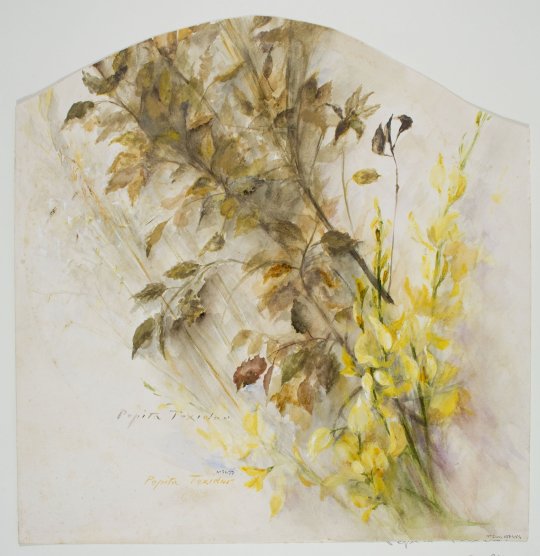


Paintings by Josefa Teixidor, also known as Pepita Teixidor (1875-1914). Museu Nacional d'Art de Catalunya.
Josefa Teixidor is considered the best flower painter in the Catalan Modernist movement, an art movement where flowers and nature were very present. She was celebrated during her life, and she was chosen as one of the three artist who would represent Catalonia in the Universal Exhibition held in Paris in 1900, together with Ramon Casas and Santiago Rusiñol.
Despite the recognition of her work, at the time women weren't usually allowed to exhibit their work in art galleries. Josefa Teixidor, together with other Catalan women artists of the time like Lluïsa Vidal, Visitación Ubach, Antònia Farreras, and Maria Lluïsa Güell, fought for the right of women to exhibit their art in Barcelona. Her success allowed her to exhibit her work here and also in France. She was also involved in the Catalan feminist magazine Feminal, that gave support to and published about the work of women artists, scientists and industrials.
She was awarded both in Catalonia and in France. Soon after her early death at 39 years old, she became the first woman who was neither a saint nor a queen to have a statue dedicated to her in Barcelona, Catalonia's capital city. (Even nowadays, Barcelona only has 14 statues of women who aren't saints nor queens, and that is including fictional characters. For comparison, Barcelona has at least 168 statues of real men in that category).
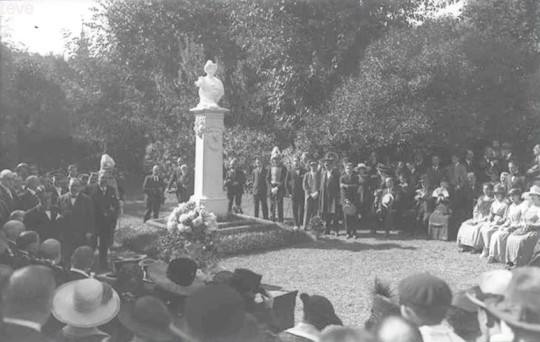
Inauguration of Josefa Teixidor's bust in Barcelona's Parc de la Ciutadella public park. 1917. Catalonia National Archive.

Bust to Pepita Teixidor nowadays.
Sadly, most of her work is owned by private collectors, only the three paintings included in this post are owned by a museum (MNAC). However, MNAC owns a huge collection and exhibits only a fraction of it, and none of Josefa Teixidor's works are displayed.
While making this post, it was difficult to find images of her work in good quality, because for some reason MNAC didn't have her works uploaded to their online catalogue. I sent them a message about it, and they answered the next day with the three works uploaded on their website (many things can be achieved by complain at the right people!). I hope making these paintings publicly available, together with this post, will make Josefa Teixidor more present in our minds. Sadly, she has been forgotten by most of society, while her male contemporaries like Rusiñol and Casas are still among the most famous artists of all times in our country. When we think of Modernist painters, from now on I hope we also think of Josefa Teixidor.
#pepita teixidor#josefa teixidor#arts#pintura#història#barcelona#catalunya#catalonia#coses de la terra#museums#flowers#watercolor#women in art#women in history#women painters#watercolor art#modernisme#history#feminism
23 notes
·
View notes
Note
I’ve been thinking about the auction for ages, just turning it around in my head constantly. My instant guy reaction was to be horrified, and then people online made me think I was being unreasonable. And I just kept going back and forth unsure, but Brian’s message I think helped clear my head. And I think I’ve figured out what bothers me the most about all this. Because my first initial reaction was mostly just emotion. Mostly just “but that is awful!” Especially hearing about the fucking mustache comb. Like you KNOW what kind of freaks are out there. If Freddie hadn’t been a celeb I’d probably honestly say yeah sure sell it whatever. But he was a celeb, and there’s a plethora of weirdos who would want that. You have to take that kind of thing into account.
I’ll also be honest, I don’t actually give a fuck about the furniture and art being sold. Actually if it was the interior design stuff being auctioned off I probably would have shrugged. Like oh well. It’s just a couch, and a vase or whatever (very nice very expensive furniture and decoration but you know, they don’t represent Freddie imo). The clothes, the piano, the lyrics and photos, the very personal effects (mustache comb which I will never stop harping on) that’s what bothers me. It’s because it shows an utter disregard for Freddie’s legacy. Freddie is not only a famous and legendary musician, but classic and historical. He is one of the biggest musicians there will ever be in human history (and that’s not even an exaggeration in the slightest!), and you’re just selling his handwritten lyrics etc to the highest bidder with no regard for its historical value. I’m reminded of Indiana Jones. “It belongs in a museum!”
I don’t think anybody is saying to turn Garden Lodge into a Graceland. Freddie would have been horrified at that idea with how private he was. But to not offer Queen (the only her legendary musicians in this equation who will also be in/are in the history books) even some of the the lyrics…
I think for literal historical reasons it’s a problem to be selling these lyrics and some of these clothes to randos.
Also there is a way to display this stuff properly. Everybody it seems jumps to “well Freddie wouldn’t want a Graceland.” Like yeah of course not. But there is (maybe was, not sure it’s still up) a Nirvana exhibit, which Kurt Cobain’s family had a big hand in. And it displays some important objects for the public, including some of Kurt’s clothes (which were not nearly as flashy/high fashion as Freddie’s, albeit still iconic). And I also think of again, how gracefully Frances Bean Cobain (Kurt’s daughter) who has the majority of his estate, handles his legacy, and seems on very good terms with the other band members. The literal only hiccup I can think of isn’t even her fault. Kurt’s guitar was auctioned off after being stolen from her by her ex husband, and she fought to get it back.
Anyway, I think there was a way to handle this. To auction off some of Freddie’s goods, like furniture and stuff that isn’t actually important to his legacy, and still get a hefty price. Hell, maybe even sell a shirt or two that is a bit more important. But then handle the placement of the more important materials more delicately. Hell, you could still maybe even make some money depending on how you arrange where it goes.
Yeah, that's pretty much what it comes down to. I don't care much about the furniture and décor, either, and I think most people don't. Those are things that were irrelevant to his work, just things to fill up a house. I've been saying for weeks now that selling the things which directly have to do with Freddie's music, such as his lyrics, instruments, and stage costumes, is indicative of a complete and utter disregard for his life's work, impact, and legacy as a musician. It says a lot when randos who never know Freddie think, "Wow, his lyrics should be in a museum" but the woman who the media has painted as the Only One who ever understood Freddie saw no value in these items outside of dollar signs. It's just very disrespectful.
No one is arguing that the lyrics and costumes of Freddie's that are already on display at the Montreux museum or other exhibitions aren't what he would've wanted, so these people defending the auction with "BuT FrEDDiE WOuLDn'T HavE WanTED--"are just annoying.
And to me, what's equally scummy is how there was zero consideration for Freddie's living loved ones. That was one of my immediate thoughts when I first heard of the auction. Mary clearly doesn't view Freddie's lyrics, instruments, or costumes as part of Queen's larger legacy. It's both disrespectful to the band as individuals, and to Queen as a whole. It's like she really never gave a shit about Queen, Freddie's baby, and of course she certainly never gave a shit about anyone else in his life, no matter how close he was to them (and you could argue the closer they were to Freddie, the more she resented them). And it's the very personal items, too, not just the mustache comb, but the personal photos of the band hanging out in the pool or the photos of Freddie and Anita in kimonos at Garden Lodge which shouldn't be sold without asking those actually in the pictures first. It's shitty that the band and Freddie's other loved ones would even be put in the position of having to purchase photographs that they are in.
Anyway, the whole thing is really shitty to both Freddie's legacy as a musician and his loved ones. Plain and simple.
22 notes
·
View notes
Text




A well known Fossil, 9.7m long mortichnia of a horshoe crab. Source:


The longest complete death track fossil to be found. Not too recent of a discovery ,but it is one of my favourite famous fossils, i wanted to share it.
Article by Nick Crumpton for bbc, 6th September 2012:
"A 9.7m-long trackway was created around 150 million years ago when a horseshoe crab fell into a lagoon.
The find is of interest because the fossil of the animal itself is present at the end of the trackway, where the animal died.
The research appears in the journal Ichnos.
The fossil trackway of the animal's last moments - known as a mortichnia, or death march - was discovered in the lithographic limestone of Bavaria in Germany in 2002, where spectacular fossils of the famous feathered dinosaur Archaeopteryx have also been found.
Since then, the fossil trackway had remained an exhibit in the Wyoming Dinosaur Center in the US until Dean Lomax of the Doncaster Museum and Art Gallery and Christopher Racay began working on a project to describe it"
Article by Sergio Prostak for Sci.news, 30th August 2012:
"Around 150 million years ago, during the Jurassic Period, the horseshoe crab left its tracks in the prehistoric substrate of a lagoon in tropical Germany.
The track, which is over 9.7 m (31.8 ft) in length, displays both the beginning and end, resulting with the crab itself preserved.
It was discovered during an expedition in 2002 and derives from the famous Solnhofen Lithographic Limestone of Bavaria in Germany. The specimen remained unstudied until paleontologists realized its importance within paleoichnology – the study of fossilized traces.
The study is published online in the latest issue of the journal Ichnos.
The sheer size of the track in question is extremely rare in itself, but to have the tracemaker (the horseshoe crab) preserved at the end of its ‘mortichnia’ (death march) and the landing position of the crab preserved is quite spectacular. Such a discovery is extremely rare; it allows a glimpse into a moment of locomotion that may have taken just minutes, that is now captured forever, thus allowing the final moments of a horseshoe crabs’ life before it succumbed."
20 notes
·
View notes
Text
5 Iconic Architectural Landmarks

Five Iconic Buildings and Their Significance
Throughout history, architectural landmarks have served as symbols of human ingenuity, cultural expression, and artistic achievement. These structures not only reflect the architectural styles of their times but also stand as enduring testaments to the creativity and ambition of their creators. Here, we explore five of the most iconic architectural landmarks in the world, each with its own unique significance.
1. Sagrada Familia, Barcelona, Spain
The Sagrada Familia is perhaps most renowned for its association with the legendary Spanish architect Antoni Gaudí. Gaudí’s visionary interpretation of Gothic architecture, combined with elements of Art Nouveau, makes the Sagrada Familia a truly unique masterpiece. Though construction began in 1882, the cathedral remains unfinished, with efforts underway to complete it by 2026, marking the centenary of Gaudí’s death. Gaudí’s influence is evident throughout Barcelona, and visitors to the city are encouraged to explore his other works as well.
2. Taj Mahal, Agra, India
The Taj Mahal, a stunning white marble mausoleum, was commissioned in the mid-17th century by the Mughal emperor Shah Jahan in memory of his beloved wife, Mumtaz Mahal. Located in Agra, Uttar Pradesh, the Taj Mahal is one of the most revered architectural marvels in the world, celebrated for its intricate design and breathtaking symmetry. In addition to the Taj Mahal, visitors should also explore the nearby Agra Fort, which offers spectacular views of the Taj Mahal and provides a deeper insight into the rich history of the Mughal Empire.
3. Palace of Versailles, Versailles, France
The Palace of Versailles, located just outside Paris, served as the primary residence of French royalty from 1682 until the French Revolution in 1789. This opulent palace is famous for its lavish architecture, expansive gardens, and the iconic Hall of Mirrors. Versailles is easily accessible from Paris and offers various tour options, including a visit to the King’s Bedchamber, the State Apartments, and the historic collection of royal carriages. A stroll through the palace gardens is a must for any visitor.
4. Forbidden City, Beijing, China
The Forbidden City in Beijing was the imperial palace of China during the Ming and Qing dynasties. As one of the most significant cultural landmarks in China, the Forbidden City consists of nearly 1,000 buildings, each steeped in history. The Palace Museum now manages the complex, offering visitors a chance to explore exhibitions showcasing artifacts from the Ming and Qing periods. It is essential to purchase tickets online in advance due to government regulations.
5. Saint Basil’s Cathedral, Moscow, Russia
Located in the heart of Moscow, Saint Basil’s Cathedral is often mistaken as part of the Kremlin, but it actually stands just outside the Kremlin walls on Red Square. Commissioned by Tsar Ivan the Terrible in 1561, the cathedral’s distinctive onion domes and vibrant colors make it one of the most recognizable examples of Russian architecture. Although affiliated with the Russian Orthodox Church, the cathedral is state property, offering tours nearly every day of the year for visitors to experience its historical and cultural significance.
These five architectural landmarks are not only physical structures but also cultural treasures that have stood the test of time. Each landmark tells a story of the people who built them, the societies they served, and the artistic and engineering marvels they represent. Visiting these iconic buildings offers a glimpse into the rich tapestry of human history and the enduring legacy of architectural brilliance
#architectdesign#home interior#interior design#interiordoor#architecture#design#interior decorating#interiors#interiorstyling#home#landmark#residential architects#architecturephotography#amazingarchitecture
5 notes
·
View notes
Photo
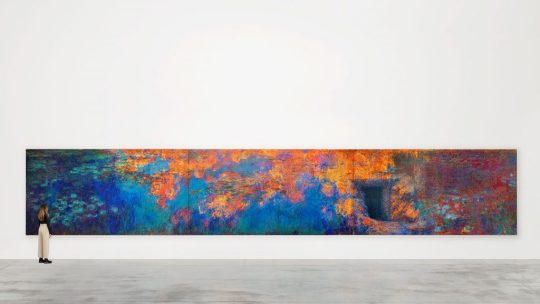
Ai Weiwei Has Recreated Claude Monet’s Iconic ‘Water Lilies’ Using 650,000 Multi-Colored Lego Bricks
The artist has updated the famous work to include a "dark portal" into his childhood bedroom.
You can construct whole worlds using the building blocks of Lego, but Ai Weiwei has taken things to another level by recreating Monet’s monumental triptych Water Lilies (1914–26). The mammoth undertaking has gone on display at the Design Museum in London ahead of a major new survey opening next month.
One of the French Impressionist’s most famous paintings, which is currently on display at MoMA, the original work depicts the lily ponds at Monet’s beloved gardens in Giverny near Paris, an idyllic scene hazily rendered by his characteristic bold brushstrokes.
In the new medium of Lego, however, it took 650,000 bricks in 22 colors to make, reaching nearly 50 feet in length.

The result is what the museum calls “a depersonalized language of industrial parts and colors,” with the Lego more suggestive of the pixels through which we often engage with art today, whether the work is natively digital or a photograph shared online.
The artist has added his own touch to the centuries-old composition, inserting a “dark portal” to the right-hand side that leads to the underground dugout that Ai shared with his father while their family was exiled to Xinjiang during the 1960s.
“Our world is complex and collapsing towards an unpredictable future. It’s crucial for individuals to find a personalized language to express their experience of these challenging conditions,” said Ai Weiwei in a statement. “Without a personal narrative, artistic narration loses its quality.”

“Toy bricks as the material, with their qualities of solidity and potential for deconstruction, reflect the attributes of language in our rapidly developing era where human consciousness is constantly dividing,” he added.
The show will also include Ai’s Untitled (Lego Incident), another new work taking the form of a “field” on the floor made from Lego bricks given to the artist by fans around the world after he posted on Instagram that Lego had temporarily refused to stop letting him bulk order their products to make political artworks. Ai believed the Danish company was hoping to protect its business interests in China, but his post resulted in an international outcry and the toymaker changed its policy.
“Ai Weiwei: Making Sense” is the first exhibition dedicated to Ai’s focus on design and architecture specifically. It opens at the Design Museum in London on April 7 with some of the artist’s best known works alongside a series of five new “fields” filled with objects that he has made or collected. It runs until July 30.
By Jo Lawson-Tancred.
#Ai Weiwei#Claude Monet‘Water Lilies’#Ai Weiwei Has Recreated Claude Monet’s ‘Water Lilies’ Using 650000 Lego Bricks#lego#chinese artist#french artist#art#artist#art work#art world#art news
29 notes
·
View notes
Text
Modern Art of Bahia Museum’s Unique Heritage Collection

Bahian Museum of Art
Through the most recognisable pieces in collection, which are now digitally available, discover the colourful tapestry of modern Brazilian art, from historical roots to contemporary voices.
Nestled in a picturesque architectural complex on Salvador’s beachfront is one of Brazil’s most significant modern art organizations. Google’s is thrilled to present the rich legacy collection of the Museum of Modern Art of Bahia to a worldwide audience for the first time. This collection perfectly embodies the lively spirit of Brazil.
Through a partnership with Google Arts & Culture, more than 70 of Google’s collection’s paintings have been digitised in extremely high resolution, making the MAM-Bahia experience accessible online. Now, visitors from all over the world can explore Google’s digital collection and learn about the tales that distinguish our museum. Here are three highlights that are not to be missed to get you started:
Going from Manor to Museum
Explore the rich past of Solar do Unhão, the stunning coastal community home to the Museum. Discover how this ancient monument, which dates back to the 16th century, changed over time and became the great cultural hub it is today thanks to the ideas of architect Lina Bo Bardi.
The most significant facility for modern and contemporary art in the state of Bahia is the Museum of Modern Art of Bahia. Its breathtaking site, the mediaeval mansion Solar do Unhão, overlooking the ocean and surrounded by lush foliage, lends an extra degree of beauty to the art experience.
Constructed in the 17th century, the Solar do Unhão has an interesting history, having passed through the hands of affluent families, Benedictines, and even a snuff factory in the early 1900s.
It was first mentioned in writing in the sixteenth century. Gabriel Soares de Sousa, a Portuguese coloniser, farmer, and historian, was the owner. They left the region to the Benedictines of Bahia in will after passing away on an expedition close to the Paraguaçu River’s sources.
Italian-Brazilian architect created the Museum of Modern Art of Bahia vision and was its first director from 1959 to 1963. They is well recognized for creating the Museum of Art of São Paulo (MASP) project.
The Rubem Valentim Pavilion and a new Sculpture Garden were added to the museum area in 1998.
Presently, MAM-BA’s exhibition spaces feature well-known artists from Brazil and beyond, solidifying the museum’s position as a major player in the country’s contemporary art landscape.
In addition to art shows, the museum hosts a busy cultural schedule. A vibrant community of learning and involvement is fostered by the museum through continuing educational programs and multilingual events.
Enlarge the assortment
Discover about 70 high-definition digital masterpieces from the MAM-Bahia collection thanks to Google Arts & Culture. From modernist classics like Tarsila do Amaral and Rubem Valentim to contemporary artists like Bob Wolfenson and Panmela Castro, explore the brushstrokes and uncover hidden elements in paintings.
Modernist Icon Tarsila do Amaral
The famous Brazilian artist Tarsila do Amaral (1886–1973) used startling colours and compositions. Manor to Museum used Brazilian themes and sceneries in her ‘Modern Art’.
An Up-Close Look at Tarsila’s “O Touro”
Let’s take a closer look at Tarsila do Amaral’s well-known “O Touro.” Observe how the strong visuals and vivid colours express the tenacity and resiliency of Brazilian culture. Bold, geometric shapes are used to symbolise the bull, a symbol of both industry and nature.
Tarsila do Amaral used European avant-garde, especially cubism, but Manor to Museum also created her own personal style by fusing Brazilian colours and ideas into her works. This resulted in a genuinely original artistic voice.
Produced in 1928, this piece of art represents a turning point in her creative development. It’s reminiscent of her previous “Pau-Brasil” (Brazilwood) style, but it’s also deeply based in her “Antropofagia” (Anthropophagy) period.
There is something gigantic about the bull, the main character, that goes beyond realism. Its geometric and simple design is reminiscent of the early 20th century cubist influences.
Tarsila embraced ‘ugly’ or inoffensive colours like violet pink and pure blue, which were deemed to be daring and unfashionable at the time. Her devotion to artistic innovation and pushing limits was evident in this audacious decision.
Viewers are still drawn to the artwork because of its vibrant colour scheme, straightforward shapes, and surreal atmosphere, which entice us to explore a fanciful vision of the Brazilian countryside.
Highlighting Black Art
Salvador’s cultural landscape is enriched with African heritage. Without the contributions of Black Artists, whose works reflect the influence of Afro-Brazilian faiths, customs, and people, Bahia’s art would not be the same. Learn about some of the well-known names that comprise the museum’s collection and the ways in which up-and-coming artists are realising their ideas and cultural legacies.
Salvador, Bahia’s lively capital, is a distinctive destination due to its African roots. The city has the most African descendants worldwide.
Emanoel Araújo
Emanoel Araújo (1940-2022) incorporated Afro-Brazilian culture into his prints, paintings, and sculptures. Emanoel Araújo’s attention to Afro-Brazilian heritage is visible in his paintings.
Araújo’s impact extended beyond galleries and museums. As the director of the Pinacoteca do Estado de São Paulo and later the Afro Brazil Emanoel Araújo Museum, he was honoured following his passing.
Panmela Castro
Powerful Brazilian artist and activist Panmela Castro (b. 1981) promotes women’s rights and social justice through her art. Her murals, paintings, and performances address gender equality and feminine identity.
In this picture, the artist depicts Federal University of Bahia scholar Ana Cláudia Lemos Pacheco, who studies the “solitude of the Black woman”.
Juarez Paraíso
Juarez Paraíso, a notable Brazilian artist (b. 1934), works in sculpture, painting, and printmaking. Paraíso has greatly influenced the art scene in Bahia and Brazil. His art is modernist with a twist.
Google’s uses interlocking circular structures that resemble organic shapes. His emphasis on circularity and organic forms distinguishes him from geometric modernism.
Tiago Sant’Ana
Contemporary Brazilian artist Tiago Sant’Ana (b. 1990) is making waves with his thought-provoking paintings on race, history, and power.
The “Sugar Shoes” series emphasises freedom’s precarious balance. These sugar shoes represent Black liberation. Their impending dissolving in seawater highlights their newfound citizenship’s vulnerability.
Anderson AC
Versatility defines Anderson AC (b. 1979). He works in painting, graffiti, collage, photography, video, and installation. Memory, history, and past-present links are common topics in his art.
His creations often start with found objects, giving them new life. This shows his interest in personal and collective histories.
Read more on govindhtech.com
#ModernArt#BahiaMuseum#UniqueHeritageCollection#google#Googledigitalcollection#Memory#uses#AndersonAC#JuarezParaíso#PanmelaCastro#EmanoelAraújo#HighlightingBlackArt#technology#technews#news#govindhtech
2 notes
·
View notes
Text
Benefits of Membership of Art Organisations and Professional Bodies
Introduction
Scotland's creative landscape is supported by various organizations like Creative Scotland, VACMA, Creative Scotland Open Fund, Jerwood Live Work Fund, William Syson Foundation Funding, Balavoulin Art Group Grants, and Tasgadh Small Grants for Traditional Arts Fund. These funding programs help artists, organizations, and museums realize creative concepts, offering networking and professional development opportunities.
A-N Membership Benefits

A-N: With operations in Newcastle Upon Tyne and London, The Artists Information Company is the most well-known artists' membership organisation in the UK, with over 29,000 members. A-N provides a range of services and supports specifically designed to meet the needs of visual arts professionals and artists for an annual fee of £308. This essay examines the many advantages of A-N membership, the function of professional associations in different fields, and the value of art associations in promoting professional and community development.
A-N offers artists invaluable resources and opportunities, including access to information for applying for art bursaries ranging from £500 to £1500 and comprehensive guides on Degree Shows. The organisation provides research on creative industries and education, ensuring artists stay competitive and knowledgeable. A-N's extensive network connects artists to potential collaborators, mentors, and patrons, fostering a sense of community and reducing isolation. The job and opportunities board lists residencies, administrative roles, and initiatives like cultural reforesting projects, providing financial stability and new avenues for artistic expression and professional development. Participating in A-N helps artists feel connected to the larger community, which lessens the isolation that sometimes accompanies solitary artistic endeavours.
Professional Bodies for Artists
In the art world, professional associations for artists provide vital support networks essential for both emerging and established creators. The Visual Artists Association (VAA) offers a comprehensive suite of resources, including business management guidance, personal brand development strategies, and tools for sales generation, all designed to assist artists in building profitable art enterprises. Additionally, VAA members gain access to various events, extensive online resources, personalised business advisory services, and specialised training programs, all within a supportive and friendly community. Similarly, the Royal Society of British Artists (RBA) fosters excellence in painting, sculpture, and printmaking. It achieves this by organising prestigious exhibitions and events that provide artists with critical exposure and networking opportunities. Membership in these organisations is often tiered, with categories such as Associate, Member, and Fellow, each with specific requirements and benefits. This structured approach ensures that artists receive the tailored support and recognition appropriate for their career stage, facilitating professional growth and artistic development.

Historical and Regional Art Institutions
The Royal Academy of Arts and the Society of Artists of Great Britain are the country's most famous historical art institutions. Nine eminent art societies with various media specialisations make up the Federation of British Artists. These societies are common throughout the United Kingdom, ranging from Edinburgh to St. Ives, and they offer artists networks of support. To preserve quality and encourage a wide range of artistic expression, they employ strict selection procedures and welcome submissions from all backgrounds.
The Value of Art Associations
The Society of Artists of Great Britain and the Royal Academy of Arts are the nation’s most well-known historical art organisations. The Federation of British Artists comprises nine distinguished art societies specialising in various media. These societies, from Edinburgh to St. Ives, are widespread in the UK and provide support networks for artists. They still use stringent selection processes and accept submissions from artists of all backgrounds to maintain quality and promote a broad spectrum of artistic expression.
Community and Professional Development
Being an artist can be a lonely endeavour, but joining an art association helps by bringing artists together in lively groups. These forums provide priceless chances to exchange ideas, get inspiration, and learn from peers. Because collaborators encourage one another to achieve greatness, collaborative environments can greatly enhance artistic practices.
Getting together with other artists can be inspiring in smaller or bigger groups. Knowing that people will view and value their work inspires artists to push themselves, finish projects, and improve their work. A community of artists also encourages open and sincere dialogue, which expands one's contacts and opens doors to new prospects.
Conclusion
In conclusion, becoming a member of a professional organisation such as A-N: The Artists Information Company has several advantages beyond receiving financial assistance. Membership offers invaluable networking opportunities, access to critical information, and a caring community that can lessen the sense of isolation often felt in the creative industry. Art associations and professional organisations from various sectors play an essential role in cultivating talent, fostering professional growth, and maintaining ties to illustrious artistic traditions. For instance, these organisations frequently offer workshops, seminars, and exhibitions that provide artists with the latest industry insights and trends, thereby enhancing their skills and knowledge base. Additionally, Joining a professional community can boost an artist's confidence and motivation, allowing for the exchange of ideas and constructive feedback. This can lead to collaborations, new avenues for artistic expression, and career advancement. These communities often advocate for artists' rights and interests, providing a collective voice that can influence policy and public opinion. This advocacy ensures that artists' challenges and needs are addressed at higher levels, contributing to a more supportive environment for the arts. Thus, joining a professional organization like A-N improves an artist's professional and personal fulfilment and contributes to the creative sector's broader health and vibrancy.
REFERENCES
a-n The Artists Information Company
The Benefits of Membership to Art Organisations and Professional Bodies | by Gemma Murray | Medium
The Benefits of Joining Professional Bodies in 2024 | Crucial Services
Joining a Professional Body or Art Society
About - Visual Artists Association
Art Associations and its benefits - Aartzy
2 notes
·
View notes
Photo






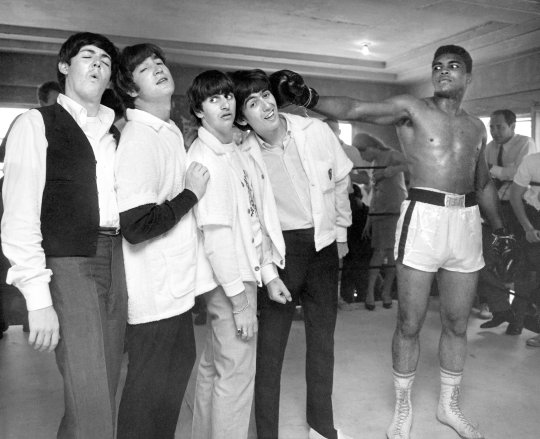

Happy Birthday world renowned photographer Harry Benson, born in Glasgow December 2nd 1929, making 93 today!
And yet another with nothing online about his early life, Harry left school aged thirteen and began working for a local paper, the Hamilton Advertiser. In 1958 he graduated to the cut-throat centre of the tabloid press on London’s Fleet Street, working for the Daily Sketch and then the Daily Express.
On an assignment for the Daily Express, Benson travelled with the Beatles to America in 1964. Continuing to live and work in the US ever since, Benson’s photographs have graced the pages of the most influential magazines and newspapers of the twentieth century.
This guy has been around during some of the worlds most famous events, he was feet away when Bobby Kennedy was assassinated; in the room when Nixon resigned; with Martin Luther King, Jr. on the Meredith march; and with Coretta Scott King at her husband’s funeral. Benson chronicled the building of the Berlin wall and its fall, and covered the aftermath of Hurricane Katrina.
Celebrities Benson has photographed include Bobby Fischer, Elizabeth Taylor, Muhammad Ali and Michael Jackson, hi pics have graced the pages of the top magazines including Life, Vanity Fair and The New Yorker and was the subject of a BBC Scotland documentary, called Photography: Harry Benson which was written by William McIlvanney.
Benson has taken over one-hundred cover shots for People Magazine, and his photography has been featured in Architectural Digest and Newsweek. He has had more than forty solo gallery exhibitions and has had fifteen books of his photography published.
Harry Benson’s photography is in the permanent collections of the Smithsonian and the Scottish National Portrait Gallery in Edinburgh. Both museums exhibited the 2006-2007 exhibition, Harry Benson: Being There, and the Kelvingrove Museum in Glasgow held a major retrospective of the photographer in 2008.
Benson was honoured with a Doctor of Letters from the Glasgow School of Art and Glasgow University in 2007 and has too many awards to his name than I have room to post here! He lives in Wellington, Florida with his wife, Gigi, who works with him on his book and exhibition projects.
Pics are of the man himself ,then three in Glasgow, the fountain one is from the 50's the 70's and third Diane 1992. Dolly Parton next, then the Beatles twice, the second with Ali, James Brown trying to do the splits is the final photo.
22 notes
·
View notes
Photo




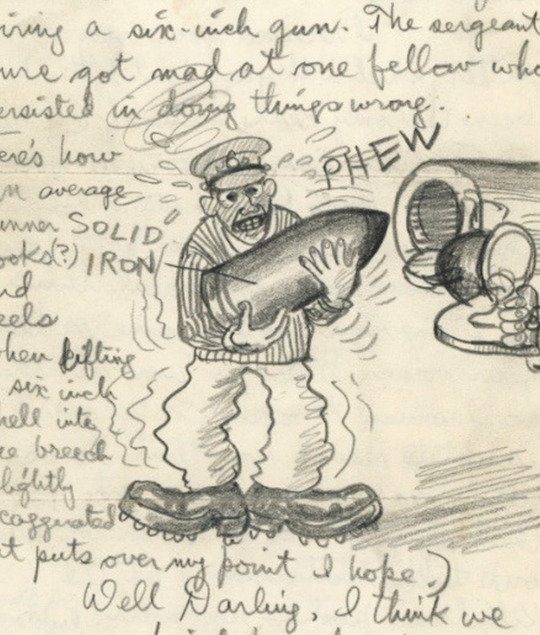
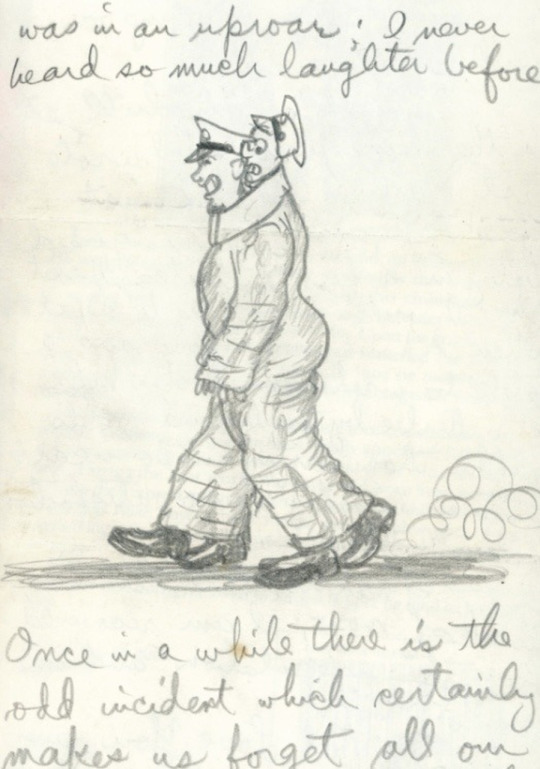




What is perhaps the most anticipated new book on Canadian art in recent memory, this new volume on E.J. Hughes’ wartime body of work is an astounding look at an exceptional collection. I’ve been eagerly awaiting this book for the past few years, as Robert Amos has gradually released a series of finely crafted books on one of British Columbia’s, or I should say Canada’s most famous artists. The titles include E. J. Hughes Paints British Columbia, E. J. Hughes Paints Vancouver Island, The E. J. Hughes Book of Boats, and now, E. J. Hughes: Canadian War Artist. Actually, the book was released in the fall of 2022, and I really should have posted a review before Christmas, but I have made it my New Years resolution to make amends.
In early 1939, just as the young artist was emerging from the Great Depression, along with Orville Fisher and Paul Goranson, Hughes helped to produce the remarkable 12 panel mural for the Golden Gate International Exhibition in San Francisco. This exhibition was an extravagant event (an entire island was created in San Francisco Bay for the occasion) which featured the high ideals of combining fine art, architecture, and global culture for the betterment of humanity, much like the Arts & Crafts movement had sought to do decades earlier. Alas, the outbreak of war shattered many of those ambitions, and the artist Hughes quickly changed course and enlisted in the Canadian Army on August 30, 1939.
His two colleagues Fisher and Goranson would ultimately follow him into military service, as would another young Vancouver artist, Jack Shadbolt. Frankly, each one of these artists deserves a wartime exposition of their artwork, but for now, we have this volume to initiate the study of this tumultuous time.
The book showcases 70 paintings, drawings, and sketches from the Canadian War Museum, all prizes of the collection but works that are rarely seen in one place. E. J. Hughes created these during the artist’s war service in Ottawa, England, Wales, and Alaska. To keep things closer to home, for the last image above, I’ve included a sketch of Lt. Col. F.W. Guernsey, Mining Engineer, a portrait made at Stanley Park Fort in 1940 (not included in this book, but found in recent online auction archives). For a more in-depth review of the book, I invite you to refer to this Remembrance Day feature by the author.
From the book’s description:
“In this, the third volume [actually, you could say fourth - The E. J. Hughes Book of Boats is a smaller edition, but still stands on its own] of an award-winning series on artist E.J. Hughes (1913–2007), Robert Amos turns his focus to Hughes’s service in the Second World War.”
Tim Cook, the Director of Research at the Canadian War Museum writes about the artist:
"As an artist in uniform during the Second World War, E. J. Hughes created a profound legacy of war art for future generations to empathize, imagine, and re-imagine the Canadian military experience. In this definitive history of Hughes's contributions, Robert Amos offers a penetrating study based on unique archival material and a deep analysis into hundreds of wartime works of art. The war shaped Hughes, leading to period of great creativity that propelled him forward to become one of Canada's most recognized west coast artists." — from the book The Fight for History: 75 Years of Forgetting, Remembering, and Remaking of Canada's Second World War.
E. J. Hughes: Canadian War Artist
Publisher: https://www.touchwoodeditions.com/book/e-j-hughes-canadian-war-artist/
9 notes
·
View notes
Text

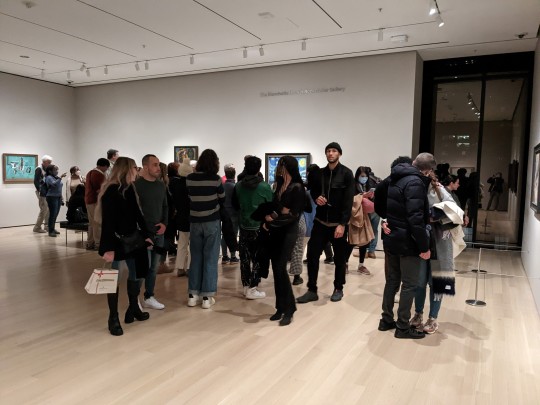
i almost never take photos in art museums, bc like... if you wanna see a picture of starry night you can easily find a hundred of them online. but i wanted to try to capture the social experience of seeing a painting this famous!
it was very, very cool to see a painting in a crowd of people who were also so excited to see it. and there's also something undeniably social about my entire lifetime of knowing about this painting. there's the cultural mythology around van gogh that's pretty far from the truth of his life & work, and there's the love & relationships & health care & education & interdependence that made up so much of his reality. there's the book i've read (a gift from my sister) of vincent's letters to his brother theo, and the love between the two of them, and the fact that i got to see this painting during a visit with my own brother. there's the episode of doctor who i've seen that thousands of other people have watched, and there's the stories i heard hannah gadsby tell during nanette that thousands of other people have heard, and there's the lessons my elementary school art teacher taught to me and the hundreds of other students who passed through her classroom. there's the exhibit of van gogh's work that i saw with my best friend in philadelphia in 2012 which was maybe the first time a painting made me weep (almond blossoms my beloved). and and and and and. i held all of this and more as i stood in the midst of that crowd in front of starry night.
what a gift to get to have this experience!
#anyway yeah i have a lot of feelings about van gogh specifically and about art in general#and i saw soooooo much incredible art this weekend#but i think this is the most famous artwork i've ever seen and i'm still trying to process that specific aspect of the experience#what a cool cool cool experience. impossible to put into words but why not give it a try anyway!!!!#cp
6 notes
·
View notes
Text
"Top Family-Friendly Attractions Singapore"
Singapore, a dazzling island city-state in Southeast Asia, is a melting pot of cultures, modern architecture, lush green spaces, and rich history. It’s a place where tradition meets innovation, making it a fascinating destination for travelers of all ages. In this article, we’ll explore some of Singapore’s most iconic attractions, including the thrilling Universal Studios Singapore, and provide essential tips for planning your visit.
1. Gardens by the Bay: A Futuristic Green Haven
Gardens by the Bay is one of Singapore’s most remarkable attractions, showcasing the city’s commitment to green living and sustainability. This expansive garden complex features the iconic Supertree Grove, Cloud Forest, and Flower Dome.
The Supertree Grove consists of towering vertical gardens that are especially enchanting at night during the Garden Rhapsody light and sound show. The Cloud Forest houses a stunning indoor waterfall and a lush mountain covered with a wide variety of plants, offering a cool and misty respite from the tropical heat. The Flower Dome, the largest glass greenhouse in the world, showcases a vast collection of flora from Mediterranean and semi-arid regions.
2. Marina Bay Sands: An Architectural Marvel
Marina Bay Sands is a world-renowned integrated resort, famous for its striking architecture and luxury offerings. The resort includes a hotel, a casino, a shopping mall, and the ArtScience Museum. However, the crown jewel is the SkyPark, an observation deck perched atop three 55-story towers. The SkyPark offers breathtaking panoramic views of Singapore’s skyline and the Marina Bay area. The infinity pool on the rooftop is a surreal experience, reserved exclusively for hotel guests.
The ArtScience Museum, with its unique lotus-shaped design, hosts traveling exhibitions that blend art, science, and technology. It’s a place where you can experience cutting-edge interactive installations and discover the intersection of creativity and innovation.
3. Sentosa Island: A Tropical Resort Paradise
Sentosa Island is Singapore’s premier destination for entertainment and leisure. It’s home to an array of attractions, including beaches, nature trails, golf courses, and luxury resorts. The island also boasts family-friendly attractions like the S.E.A. Aquarium, one of the largest aquariums in the world, and the Adventure Cove Waterpark, where you can enjoy thrilling water slides and a lazy river.

Universal Studios Singapore
Universal Studios Singapore is a star attraction on Sentosa Island, offering an exciting and immersive experience with themed zones, thrilling rides, and live shows. The park is divided into seven themed zones, including Hollywood, New York, Sci-Fi City, Ancient Egypt, Lost World, Far Far Away, and Madagascar. Each zone is meticulously designed to transport visitors into different worlds, inspired by popular movies and TV shows.
For adrenaline junkies, the park offers exhilarating rides like Battlestar Galactica: HUMAN vs. CYLON, a dueling roller coaster, and Transformers: The Ride, a 3D dark ride. Families and children can enjoy attractions like the Jurassic Park Rapids Adventure and Shrek 4-D Adventure.
Universal Studios Singapore Tickets
To make the most of your visit, it’s advisable to purchase Universal Studios Singapore Tickets in advance. This not only secures your entry but also helps you avoid long queues, giving you more time to enjoy the park’s attractions. Tickets can be purchased online or at various authorized vendors. Be sure to check for special promotions or bundled packages that include other attractions on Sentosa Island.
4. Chinatown: A Cultural Exploration
Chinatown is a vibrant neighborhood that offers a deep dive into Singapore’s rich Chinese heritage. The area is filled with traditional shophouses, temples, markets, and eateries. The Buddha Tooth Relic Temple, with its ornate architecture, is a key highlight and offers a glimpse into Buddhist culture.
The Chinatown Heritage Centre provides an immersive experience into the lives of early Chinese settlers in Singapore. Don’t miss the chance to sample delicious local dishes at the Chinatown Food Street, where you can try everything from dim sum to Hainanese chicken rice.
5. Little India: A Colorful Cultural Hub
Little India is another vibrant district that celebrates Singapore’s Indian community. The area is known for its colorful streets, bustling markets, and aromatic food stalls. Visitors can explore traditional Indian shops selling everything from spices to textiles and jewelry. The Sri Veeramakaliamman Temple, one of the oldest Hindu temples in Singapore, is a must-visit for its intricate carvings and vibrant atmosphere.
6. Orchard Road: Shopper’s Paradise
Orchard Road is Singapore’s most famous shopping boulevard, lined with luxury boutiques, department stores, and entertainment options. Whether you’re looking for high-end fashion, electronics, or local souvenirs, Orchard Road has something for everyone. The area is also dotted with trendy cafes and restaurants, making it a great place to relax after a shopping spree.

7. Singapore Zoo and Night Safari: Wildlife Wonders
The Singapore Zoo is world-renowned for its open-concept enclosures that allow animals to roam in environments that closely resemble their natural habitats. Home to over 2,800 animals, the zoo offers a unique and educational wildlife experience. Adjacent to the zoo is the Night Safari, the world’s first nocturnal zoo, where visitors can observe nocturnal animals in their naturalistic habitats.
8. Clarke Quay: Riverside Entertainment Hub
Clarke Quay is a vibrant riverside quay filled with restaurants, bars, and entertainment venues. It’s a great place to enjoy a night out, with a wide range of dining options from local cuisine to international dishes. Visitors can also take a river cruise to see the city’s skyline and historical bridges illuminated at night.
Conclusion
Singapore is a city of endless possibilities, offering a rich tapestry of experiences for all kinds of travelers. Whether you’re marveling at the futuristic landscapes of Gardens by the Bay, exploring the cultural enclaves of Chinatown and Little India, or seeking thrills at Universal Studios Singapore, there’s something for everyone in this dynamic city. Make sure to plan your visit and purchase your Universal Studios Singapore Tickets in advance to ensure a smooth and unforgettable experience. Singapore is more than just a destination; it’s an experience that will leave you with memories to cherish for a lifetime.
0 notes
Text
The Park at Heritage Hills in Venus, TX
Have you been dreaming to live in a super luxurious rental apartment? Well, here’s a recommendation for you. One of the quicker ways to find a posh living space is researching about The Park at Heritage Hills. Aside from that, they’ve been offering stylish living spaces these days. Then, it has something to do with the best three bedroom apartments in Midlothian School District area. For their community facilities, you can enjoy some add-ons. It includes sand volleyball, pet park and spa, package lockers, coffee bar, covered parking options, sparkling resort-style pool, pickleball court, modern community clubhouse, outdoor grilling areas, and state-of-the-art fitness center.
Venus, TX
Presently, we know that creating a travel itinerary is delightful. If you’re searching for pre-scheduled events in Venus, TX, it is crucial to check out online posts. Here are examples from Eventbrite website. First, there will be 2nd Annual Jaxon Anthony Memorial Foundation Axe Throwing Tournament today, July 12, 2024, at around 9:00 AM at Battle Axes Axe Throwing. Second, the Mommy Daughter Lunch is scheduled tomorrow, July 13, 2024, at around 2:30 PM at Chicken N Pickle - Grand Prairie. Lastly, you can also opt to attend the Wood & Epoxy Charcuterie Board, tomorrow, July 13, 2024, at around 12:00 PM at Rockler Woodworking and Hardware - Arlington.
Perot Museum of Nature and Science
Many people visit the Perot Museum of Nature and Science as a famous tourist attraction situated near Venus, TX. In addition, it’s a perfect place to shop with your family and friends. Basically, the Perot Museum of Nature and Science, shortened to Perot Museum, is a natural history and science museum in Dallas, Texas in Victory Park. In addition, the museum was named in honor of Margot and Ross Perot. The current chief executive officer of the museum is Dr. Linda Abraham-Silver. Furthermore, students can explore 11 permanent exhibit halls, experience educational films in their theater, and take advantage of TEKS-aligned onsite classroom or auditorium programming.
Christopher Bledsoe Killed in Motorcycle Accident in Venus, TX
We know that there are many shocking news reports in the Venus, TX. One of the stories has something to do with a highway accident. As reported, in 2022, Christopher Bledsoe was killed after an accident where a motorcycle crashed along the highway. In addition, officials reported that the crash took place at around 8:23 in the evening along US Highway 67 near County Road 213. According to reports, the investigators mentioned that 35-year-old Christopher Bledsoe was on a Ducati motorcycle traveling eastbound along US 67. Then, the motorcycle lost control, went off the roadway, and crashed into the median.
Link to map
Perot Museum of Nature and Science
2201 N Field St, Dallas, TX 75201, United States
Drive from US-67 S to Venus
30 min (30.5 mi)
Turn right
Destination will be on the left
16 sec (0.1 mi)
The Park at Heritage Hills
261 Heritage Hills Pkwy, Venus, TX 76084, United States
0 notes
Text
Selfie Museum Charlotte: Capture Ultimate Fun Moments

Selfie Museum Charlotte by Popcorn Trailer Studios is an interactive studio space for creators and families.
Click Here to Get Access
Why You Should Visit Selfie Museum Charlotte
A Unique Experience Awaits
Selfie Museum Charlotte by Popcorn Trailer Studios is more than just a museum; it’s an interactive adventure! Have you ever heard about the fun had at places like the Museum of Selfies in Los Angeles or the Selfie WRLD locations nationwide? Our museum follows in their creative footsteps, offering various artistic backgrounds and props that captivate all visitors.
Perfect for Creators and Photographers
Photographers and content creators love our space. With professional lighting and limitless creative possibilities, you're bound to enhance your portfolio. Much like the Color Factory in NYC, which is famous for its visually stunning installations, Selfie Museum Charlotte takes pride in providing an environment where your creativity can thrive.
Fun for the Entire Family
Families will find endless joy here! Similar to the experience at Happy Place in Chicago, our installations are designed to engage visitors of all ages. Whether it's the whimsical ball pits or the interactive art pieces, there's something for everyone at Selfie Museum Charlotte.
Conclusion
Visit Selfie Museum Charlotte by Popcorn Trailer Studios and immerse yourself in a world where creativity knows no bounds. It’s the perfect spot for creators, photographers, and families looking for a

fun and unforgettable experience. Special events and themed exhibits keep the excitement alive, ensuring that every visit offers something new.
Events and Special Occasions
Hosting a birthday party or corporate event? Selfie Museum Charlotte is an innovative venue that offers unique, customizable packages to make your event stand out. Imagine celebrating a milestone surrounded by vibrant backdrops and capturing unforgettable memories with friends and colleagues.
Accessibility and Convenience
Worried about accessibility? We've got you covered. Our facility is designed to accommodate all visitors comfortably. Plus, with convenient online booking and ticketing, planning your visit is a breeze.
Join us at Selfie Museum Charlotte by Popcorn Trailer Studios for an extraordinary experience that blends creativity, fun, and endless photo opportunities.

Immersive Setups
Selfie Museum Charlotte boasts meticulously designed setups that are perfect for every social media enthusiast. Our interactive exhibits are always evolving, ensuring a different backdrop for each visit. Whether it's vibrant colors, artistic themes, or whimsical settings, each corner is crafted to help you capture the perfect shot.
Family Friendly Atmosphere
Looking for an outing everyone can enjoy? Selfie Museum Charlotte is the ideal destination for families. From kids to grandparents, our fun spaces offer something for all ages. Interactive elements make exploring a joint adventure, adding joy to your day out.
Tips for the Best Shots
Want to make the most of your time here? Arrive early to avoid crowds, and don’t forget your camera or smartphone! Take your time exploring each exhibit, and don't hesitate to get creative with angles and poses. Our staff is always available to provide tips and tricks, ensuring your photos look Instagram-worthy.
Visit Selfie Museum Charlotte by Popcorn Trailer Studios: explore more about our interactive studio and book your visit today at Selfie Museum Charlotte.
#selfiemuseumcharlotte#interactiveart#creativity#artinstallations#selfiemuseum#charlottenc#funexperiences#photography#familyfun
0 notes
Text
Top 8 Museums to See in the Netherlands

The Netherlands is renowned for its rich cultural heritage, and its museums offer a glimpse into its fascinating history, art, and science. From world-class art galleries to intriguing historical and science museums, there's something for everyone. Here's a guide to the top eight museums to visit in the Netherlands, including information on Amsterdam Attraction Tickets and tips for each attraction.
1. Rijksmuseum, Amsterdam
The Rijksmuseum is the most famous museum in the Netherlands and one of the greatest art museums in the world. It houses an extensive collection of Dutch Golden Age paintings, including masterpieces by Rembrandt, Vermeer, and Frans Hals.
Tickets and Tips
Ticket Price: €20 for adults, free for children under 18.
Purchase: Tickets can be purchased online on the Rijksmuseum website.
Tips: Buy tickets in advance to skip the long lines. Consider visiting early in the morning or late in the afternoon to avoid crowds.
2. Van Gogh Museum, Amsterdam
Dedicated to the life and works of Vincent van Gogh, this museum offers the largest collection of Van Gogh's paintings and drawings in the world. It provides a detailed look at his development as an artist and his personal struggles.
Tickets and Tips
Ticket Price: €19 for adults, free for children under 18.
Purchase: Tickets can be booked online through the Van Gogh Museum website.
Tips: Book your tickets in advance, as the museum often sells out. Use the multimedia guide for a richer experience.
3. Anne Frank House, Amsterdam
The Anne Frank House is a poignant museum dedicated to the Jewish wartime diarist Anne Frank. Visitors can explore the secret annex where Anne and her family hid during World War II.
Tickets and Tips
Ticket Price: €14 for adults, €7 for children aged 10-17, free for children under 10.
Purchase: Tickets are only available online through the Anne Frank House website.
Tips: Tickets often sell out quickly, so book well in advance. Visits are scheduled in time slots, so plan accordingly.
4. Tropenmuseum, Amsterdam
The Tropenmuseum is an anthropological museum that explores cultures from around the world. Its diverse exhibits include artifacts, photographs, and multimedia displays that tell the stories of various cultures.
Tickets and Tips
Ticket Price: €16 for adults, €8 for children aged 4-18, free for children under 4.
Purchase: Tickets tropenmuseum can be bought online via the website.
Tips: Check the museum's schedule for temporary exhibitions and special events. The museum is family-friendly and offers various activities for children.
5. Mauritshuis, The Hague
The Mauritshuis is home to a world-class collection of Dutch Golden Age paintings, including works by Vermeer, Rembrandt, and Rubens. The most famous painting in its collection is Vermeer's "Girl with a Pearl Earring."
Tickets and Tips
Ticket Price: €17.50 for adults, free for children under 18.
Purchase: Tickets are available online through the Mauritshuis website.
Tips: Book your tickets online to avoid the queue. The museum is relatively small, so take your time to appreciate each masterpiece.
6. NEMO Science Museum, Amsterdam
NEMO is the largest science museum in the Netherlands and is perfect for families and science enthusiasts. It offers hands-on exhibits and interactive displays that make science and technology fun and accessible.
Tickets and Tips
Ticket Price: €17.50 for adults and children aged 4 and above, free for children under 4.
Purchase: Tickets can be purchased online at the NEMO Science Museum website.
Tips: Plan to spend at least half a day exploring the museum. There’s a rooftop terrace with great views of Amsterdam.
7. Kröller-Müller Museum, Otterlo
Located in the Hoge Veluwe National Park, the Kröller-Müller Museum boasts the second-largest collection of Van Gogh's works. It also features an impressive collection of modern art and a large sculpture garden.
Tickets and Tips
Ticket Price: €12 for adults, €6 for children aged 6-12, free for children under 6. Note that an additional fee is required to enter the national park.
Purchase: Tickets can be bought online through the Kröller-Müller Museum website.
Tips: Combine your museum visit with a day in the national park. Bicycles are available for rent to explore the park.
8. Boijmans Van Beuningen Museum, Rotterdam
This museum has an extensive collection of fine arts, ranging from medieval to contemporary works. Its collection includes paintings, sculptures, and decorative arts, with notable works by Bosch, Rembrandt, and Magritte.
Tickets and Tips
Ticket Price: Prices vary as the museum is currently undergoing renovation. Check the Boijmans Van Beuningen Museum website for up-to-date ticket information.
Purchase: Tickets can be bought online through the museum’s website.
Tips: The museum is temporarily closed for renovation, but parts of the collection are displayed in various locations in Rotterdam. Check the website for current exhibitions.
Conclusion
The Netherlands offers a treasure trove of museums that cater to diverse interests, from art and history to science and culture. When planning your visit, it's a good idea to purchase tickets in advance and check for any special exhibitions or events. Many of these museums offer discounted or free admission for children, making them great options for family outings. Enjoy exploring the rich cultural landscape of the Netherlands!
0 notes